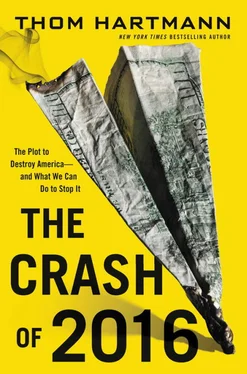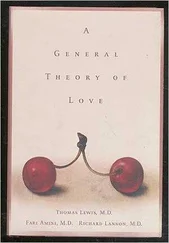The Works Progress Administration undertook bigger projects—dams and roads—than the PWA had begun. FDR put into place systems that raised workers’ wages and improved working conditions; made collective bargaining possible; moved children out of the workplace; provided long-term, government-backed mortgages for underwater homeowners caught with short-term exploding mortgages; limited working hours; and dumped the gold standard, which had been a roadblock to such a rapid expansion of government spending.
It worked. From 1933 to 1937, in just four short years, FDR pulled the national unemployment rate down from over 24 percent to below 15 percent.
In 1921, more than a decade before she won her Pulitzer Prize for reporting, journalist Anne O’Hare McCormick convinced her editor at the New York Times to send her to Italy, where she chronicled the rise of the world’s first official Fascist, Benito Mussolini. She knew well what it looked like when executive power was used, and when it was abused.
In FDR, Anne McCormick saw the former but not the latter, and she largely echoed the American zeitgeist of the day.
On March 19, 1933, she wrote a full-page article for the New York Times titled “The Nation Renews Its Faith: Out of the Swift Succession of Events That Has Marked Two Weeks of the New Deal, This Fact Stands Out: That the Confidence of the People in Government Has Been Re-established.”
“Most of all,” she wrote in that article about FDR, “he is an instrument of history.” She noted that FDR’s first two weeks were “more than a transfer of authority from one party to another.” It was, she wrote, “a change of government instead of a change in administration.”
People who’d lost hope that the federal government could ever be their advocate, that the first three words of the Constitution, “We the People,” had been hijacked by banksters and profiteers, that the government could never work for them, had their faith renewed in American institutions.
“One suspects that he expresses the kind of revolution that fires the American mind,” McCormick wrote, “a 100 percent American Revolution, whose manifesto is the Constitution.”
And by Roosevelt’s force of personality, Congress went along.
As McCormick noted, “One reason for the present meekness of both Houses is that every member is practically buried under avalanches of telegrams and letters from constituents. These messages come to Democrats and Republicans alike. Sometimes profane, always imperative, they are mostly variations of a single order: Support the President: give him anything he wants .”
Toward the end of the new president’s first month, McCormick again published a full-page New York Times article about FDR. On March 26, 1933, she wrote, “Mr. Roosevelt thinks and talks a great deal about government… He believes that at every turning point of history some one rises up who can enunciate and in a sense personify the new direction of the public mind and will. In his view America has reached such a crossroads.”
By 1936, the Great Depression–induced “fear” that FDR had warned the nation of in his First Inaugural had largely subsided in America because of the revolutionary economic policies he enacted in his first few years in the White House.
However, solving the Great Crash’s economic crisis was just the first task. FDR knew the next task was to remain vigilant against the Royalist counterrevolution enabled by the Great Forgetting.
And so, as he was accepting his party’s nomination for a second term as president of the United States, Roosevelt said, “Today, my friends, we have won against the most dangerous of our foes. We have conquered fear.”
But, he cautioned, “I cannot, with candor, tell you that all is well with the world.” He added, “Clouds of suspicion, tides of ill-will and intolerance gather darkly in many places.”
In fact, he’d confronted an attempted coup by the Economic Royalists just two years into his first term.
A front man for a group of American banksters and industrialists, Gerald MacGuire, approached the popular General Smedley Butler about leading an army of 500,000 men, assembling in Elkridge, Maryland, to march into DC and onto the White House lawn to oust FDR.
Butler said that some of the wealthiest bankers and industrialists in the nation were putting up $3 million—over $3 billion in today’s dollars. DuPont and Remington were supplying the arms and ammunition for the assault scheduled to begin the following year in 1935.
But General Butler blew the whistle, and the “Business Plot,” as it came to be known, was thwarted.
In sworn testimony before the House Un-American Activities Committee, Butler said about MacGuire, “He did not give me the name of it, but he said it would all be made public; a society to maintain the Constitution, and so forth. They had a lot of talk this time about maintaining the Constitution. I said, ‘I do not see that the Constitution is in any danger,’ and I asked him again, ‘Why are you doing this thing?’”
Coconspirators were named in the hearings, including the Rockefellers, the Mellons, the Morgans, the Du Ponts, and the Remingtons. Butler told the Committee that MacGuire had told him, “You know, the president is weak. He will come right along with us. He was born in this class. He was raised in this class, and he will come back. He will run true to form. In the end he will come around.”
And it was true that Roosevelt did come from a wealthy family of considerable economic and political influence in New York. He had also practiced corporate law for a Wall Street firm. But despite his outward appearances of wealth and allegiance to the financial elite, Franklin Roosevelt was, at his core, a progressive.
He came of age during the Progressive Era in the early 1900s when his distant cousin (they didn’t know each other personally), Teddy Roosevelt, beat back the Robber Baron Economic Royalists. As he summed up while running for governor of New York for the second time in 1930, “Progressive government by its very terms… must be a living and growing thing, that the battle for it is never ending and that if we let up for one single moment or one single year, not merely do we stand still but we fall back in the march of civilization.”
So, when the Economic Royalists declared war on FDR, he declared war right back on them. “Here in America we are waging a great and successful war. It is a war for the survival of democracy. We are fighting to save a… precious form of government for ourselves and for the world,” he said in that same 1936 speech. 27
Summarizing America’s multigenerational war against the Economic Royalists, Roosevelt went on, “It was to win freedom from the tyranny of political autocracy that the American Revolution was fought. That victory gave the business of governing into the hands of the average man, who won the right with his neighbors to make and order his own destiny through his own government.”
However, Roosevelt added, since our War of Independence, “[M]an’s inventive genius released new forces in our land which reordered the lives of our people. The age of machinery, of railroads; of steam and electricity; the telegraph and the radio; mass production, mass distribution—all of these combined to bring forward a new civilization and with it a new problem for those who sought to remain free.
“For out of this modern civilization economic royalists carved new dynasties. New kingdoms were built upon concentration of control over material things.”
Roosevelt added, “Through new uses of corporations, banks and securities, new machinery of industry and agriculture, of labor and capital—all undreamed of by the Fathers—the whole structure of modern life was impressed into this royal service.”
Читать дальше












